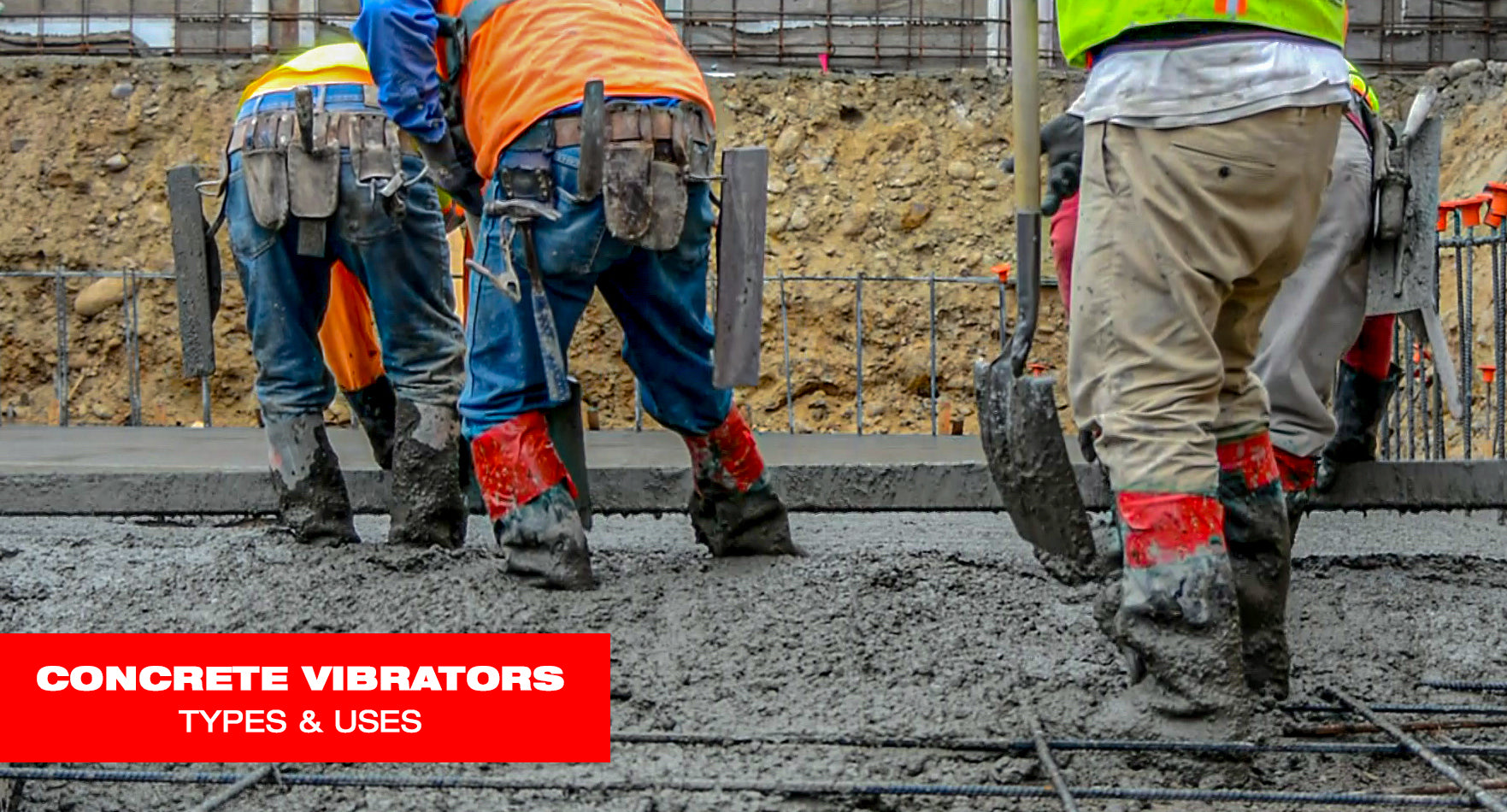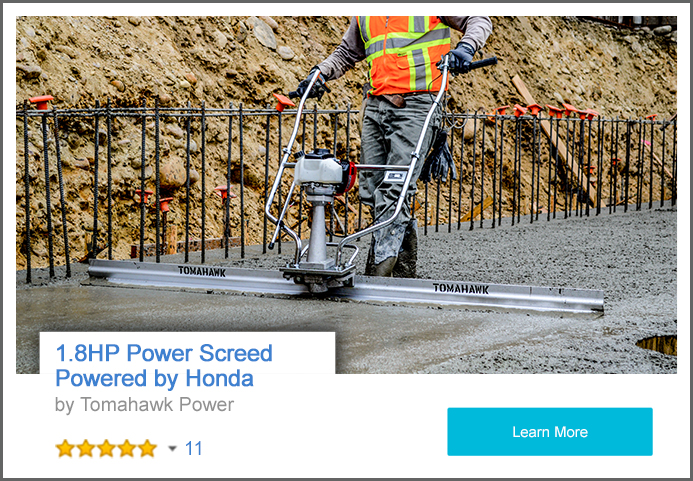When it comes to many concrete jobs from warehouse floors to large parking structures, a concrete vibrator is one of many tools needed to get the best results. Concrete vibrators are used to eliminate air pockets that can remain when pouring concrete that can ruin the integrity of concrete. Without a concrete vibrator, concrete structures can cave in or break apart from weather, earthquakes, and wear and tear over time.
A concrete vibrator is composed of three parts: the main motor, the whip, and the head. The motor connects to the whip on one side and on the other end, the head. The motor is a crucial part of driving the vibrator. Motors can be electric or gas powered. The function of the motor is to spin the internal core of the whip to vibrate at a high frequency, typically above 8000 rotations per minute.
The whip is another crucial part as it extends the vibration to the desired length of what is needed for the job. Whips have rubber casings which are intended for high vibration and heat; they can vary between 3 to 20ft. Whips that are not built for high vibration and heat will most certainly break, which could damage the motor.
The last part is the head, this part can vary in diameter and may be anywhere from 1’’-3’’ in diameter. Some vibrator heads are rubber to prevent chipping rebar when vibrating. Another unique head would be the high frequency concrete vibrators which have motors built inside the head. These high frequency vibrators require little to no maintenance and the main advantage is there is no vibration loss. This could be important when you have to vibrate a column over 20ft in length, in this scenario a standard vibrator would lose most of its vibrations after 16ft; where a high frequency vibrator would maintain stable vibration. However, these are the most expensive of the many types of concrete vibrators.
There are different types of vibrators such as gas and electric. Gas concrete vibrators have the advantage of not having to drag an electrical cord through wet concrete and offer extra portability where electricity if hard to come by, but they do not have the high RPM like their electrical counterparts. Gas vibrators can be worn like a backpack and with the extra maneuverability, can be used to navigate difficult to reach places, especially if there is no electrical power available.
Electric concrete vibrators are the more popular type of concrete vibrators due to their high RPM that is needed to thoroughly remove air pockets quickly. Electric vibrators are smaller, but can use longer whips as opposed to gas vibrators that can work with an effective maximum length of 10ft. Electric concrete vibrators can use whips at an effective maximum length of 20ft.
Current research and development of concrete vibrators is leading up to battery-powered vibrators, that will be able to have the portability of gas powered vibrators with the high RPM of electrical vibrators. The best of both worlds!
The quality of the concrete vibrator is important for a variety of reasons. Since the concrete vibrator spins the whip internally to create the vibrations, a low-quality whip can burn up and break from just hours of use. If the whip breaks internally and is still used, the motor can be destroyed as the motor cannot spin the broken whip. Some low-quality motors cannot produce the high RPM needed for different concrete jobs, and even if they do produce the needed RPM, the whips used are very short and used for limited concrete jobs. Low-quality motors are not as versatile or powerful, while high-quality motors are compatible with larger whips without any loss of power.
Popular whips used are 10ft whips and 16ft whips. The purpose of these lengths can be used for rebar columns that requires the longer whips to eliminate any air pockets that can be hard to reach with other concrete vibrators. Popular shaft options are 1 to 1.5 inch diameter, as the common rebar diameter 2 to 4 inches. Both the whip and the shaft are replaceable and interchangeable, so different length whips can work with different diameter shafts.
With the wide variety of concrete vibrators to use on your job site, it is important to consider the needs of your concrete job. Choosing the right concrete vibrator to efficiently and effectively eliminate air pockets is incredibly important to remove air pocket to avoid any concrete structural failures.
Glossary
- Concrete Vibrator - Tool used to eliminate air pockets in concrete to enhance its integrity and strength.
- Motor - Drives the vibration, can be electric or gas-powered, crucial for spinning the internal core of the whip.
- Whip - Transfers vibrations to concrete, encased in rubber to handle high vibrations and heat.
- Head - The end part of the vibrator that actually contacts the concrete, can vary in size and type, including rubber heads to prevent rebar damage.
- High Frequency Vibrators - Specialized vibrators with built-in motors in the head for consistent vibration in long-range applications.
- Air Pockets - Voids in concrete that need to be removed to prevent structural weaknesses.











